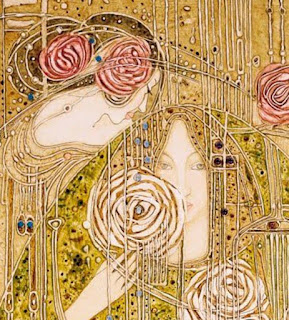Where does inspiration come from?
All artist would should agree that their greatest inspiration comes from other artists.
Impressionists would agree that Impressionists influenced each other. Modernists the same. Influence is not confined to a lifetime. Traditionalists who studied Renaissance Art in school learned their techniques. Picasso acknowledges his debt to the Paleolithic cave paintings of Lascaux, France. After a visit to Lascaux, Picasso said, “They've invented everything.”
Stickley Furniture introduces the Highlands Collection, modern, tapered, and light, inspired by the work of Margaret Macdonald and Charles Rennie Mackintosh.
Stickley's Highland Collection features design elements from Charles Rennie Mackintosh, well-known for Willow Tearooms at 217 Sauchiehall Street, Glasgow, Scotland. The Highlands Collection included carved motifs and pierced slats, crafted in solid oak and cherry wood, wood that is sustainably harvested in North America, with rich hand-rubbed finishes.
For Charles Rennie Mackintosh, inspiration came from his wife to whom he wrote in a letter, "Remember, you are half if not three-quarters in all my architectural work ..."
Then, to friends, "Margaret has genius, I have only talent."
Margaret Macdonald Mackintosh was herself a renown artist and influential member of the Glasgow School and the “Glasgow Style” it inspired. She and her sister Frances went to school at the Glasgow School of Art and later established the Macdonald Sisters Studio at 128 Hope Street, Glasgow. Their paintings reflected the growing liberation of the young woman at the fin de siècle and early 20th century, art prominently featuring women in elongated stylized drawings. Margaret herself was strongly influenced by the 19th century phenomenon of Japonism or Japonaise, and its influenc on Impressionists like Claude Monet and Vincent Van Gogh. Margaret Macdonald also drew on earlier stylized Gothic architectural motifs.
Thus, when Charles Rennie Mackintosh was given the commission for The Willow Tearooms at 217 Sauchiehall Street, Glasgow, Scotland, it is not surprising that his friezes incorporated the art of his wife. Or that the furniture utilized the cutout motifs that she used in her metal sculptures.
Margaret Macdonald Mackintosh’s influence was not restricted to her husband. She also influenced and was influenced by British Arts & Crafts designer and author William Morris. In America, Elbert Green Hubbard and the Roycroft community of East Aurora, New York followed similar design trends. Across the country, architects and furniture designers Charles and Henry Greene, employed the use of cut-outs in their furniture design. Architect and furniture designer Harvey Ellis, who worked for Gustav Stickley for a short time before his early death, was also influenced by her work.




